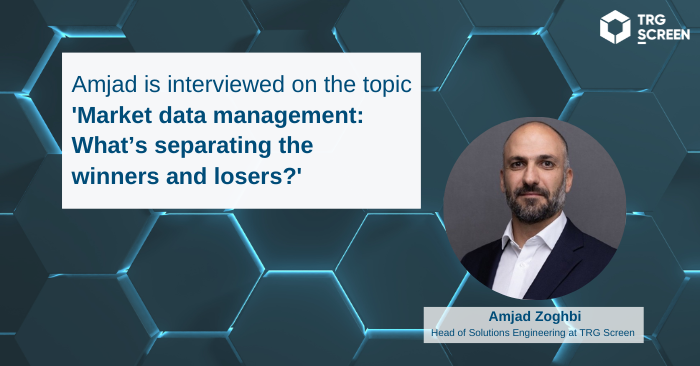“There were 5 exabytes of information created between the dawn of civilization through 2003, but that much information is now created every 2 days.” Eric Schmidt, Executive Chairman of Google.
Exchanges and other execution venues generate mountains of data that is consumed by traders and investors. Asset managers and hedge funds utilize data for research, investment and independent portfolio valuation. Trading and broking firms are both data generators and consumers. There is also a significant ‘secondary market’ of information and technology vendors repackaging data within proprietary services and solutions to sell on/back to other market participants.
As the number of financial instruments diversify, so do the available market data offerings. With institutional adoption of the fast-growing digital assets segment, these also now need to be brought into the market data management mix.
Crypto market and digital assets are growing fast
According to Statista, total crypto asset market capitalization surpassed $3 trillion in November 2021, more than triple its 2020 value. By 2030, the number of users of cryptocurrencies and NFTs (excluding DeFi/blockchain and Web 3.0 services) is expected to exceed 1 billion. While it's hard to get completely accurate forecasts of crypto and digital asset industry growth, there is no question that it is expected to continue to grow significantly in the next 5 years (some industry commentators reference a 10-fold increase from today's market size by 2027) and so too will the volume of market data generated by associated transactions.
More than 600 crypto exchanges are already live, and relatively low current barriers to entry suggest that there will soon be many more trading venues, platforms and market data connections to manage in the end-to-end, transaction processing lifecycle. Beyond crypto assets, financial markets participants are also looking at the opportunities presented by other digital assets like security and utility tokens, stablecoins and altcoins, and the underlying technologies associated with their existence and ‘delivery’ like blockchain/DLT.
More data, more sources, more silos?
The enormous number and range of data products, connections and vendor relationships means that market data managers are pulled in myriad directions by the demands of multiple internal stakeholders (trading, compliance, enterprise and regulatory reporting, client relationship management et al). Add to this an increasingly onerous regulatory reporting and compliance obligation and it is easy to understand the growing pressure on market participants to modernize and optimize internal workflows, processes and systems to support more efficient data management and utilization.
The data management challenge is further exacerbated within institutions and firms because market data management can be fragmented across asset class and business silos on disparate internal systems, further impeding cross-enterprise efficiency.

This rapid growth in new crypto and digital assets, venues and connections will add inexorably to market data volumes and create more challenges in terms of efficient data capture, aggregation and optimization. (With respect to crypto and tokenization specifically, and the associated generation of huge volumes of tokens representing fractionalized values of a ‘whole’, the need for fast, accurate market data will become an increasing imperative).
In addition to the rapid proliferation of market data – traditional and digital – and associated increase in numbers of data provider relationships, financial firms are also having to accommodate an increasingly onerous reporting burden with respect to markets transparency and conduct regulation.
Digital regulation is coming
This market data management burden will only grow as financial markets regulators build out appropriate regulatory frameworks for crypto and other digital assets.
The UK government has already stated its intention to expand the scope of the Financial Services and Markets Act 2000 relating to regulated financial activities to include new crypto assets, with associated data reporting obligations. The EU has published draft legislation for a unified EU regulatory framework for digital assets (Markets in Cryptoassets Regulation (MiCA) is due in 2024 and in the US, market regulators and overseers (Fed Reserve, FDIC et al) are working together to accelerate the development of a joint framework for crypto supervision.
Currently, crypto laws and regulations are inconsistent in Asian countries – some have only recently undertaken a regulatory approach towards cryptocurrencies, while others have not yet introduced clear legislation.
The need to capture (and report) more and more data adds complexity and (potentially significant) cost with respect to connecting and subscribing to multiple (and multiplying) data sources and suppliers (exchanges, platforms, independent information services like Refinitiv and Bloomberg et al). High-value, enterprise market data subscriptions are particularly difficult (and expensive) to manage efficiently across diverse business areas and teams.
This is where we come in
TRG Screen’s software solutions enable financial services firms to manage and optimize market data subscription spend, usage and compliance, helping institutions – and the broader financial markets community – to manage traditional and digital market data subscriptions within a single enterprise solution.
With our Optimize platform, market participants – including pure digital asset players – can scale up efficiently to manage their entire market data inventory – contracts, subscriptions and vendors. By bringing all subscriptions into a single, easy-to-use platform market participants can leverage visual dashboards and actionable insights that pinpoint opportunities to optimize market data spend and usage. Customers typically realize immediate ROI (calculate yours), longer-term cost efficiencies (2 – 30%) and engender higher vendor contract compliance.
Financial markets participants are under constant pressure to achieve more with less, to leverage scale and cost efficiencies across internal data management functions and processes, all the while juggling myriad information and data streams and systems, and vendor relationships. TRG Screen’s market data subscription management platform offers an elegant, fast to implement and highly effective solution to this challenge, fulfilling a vital function in the market data value chain.
Want to learn more?






